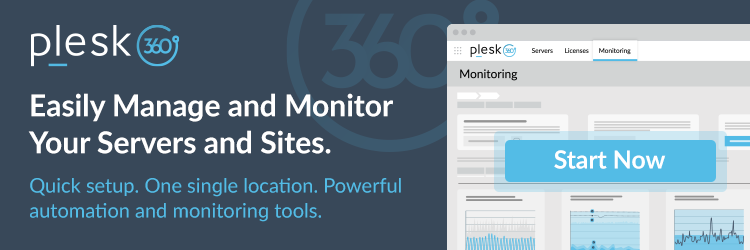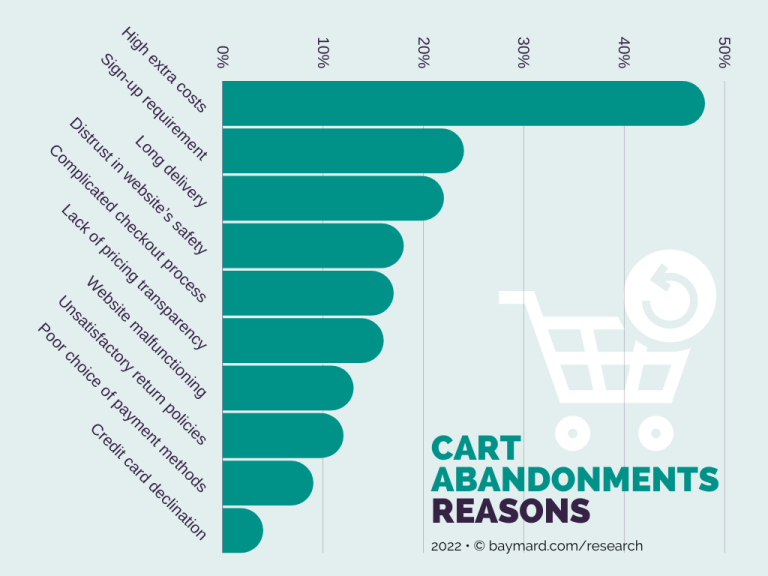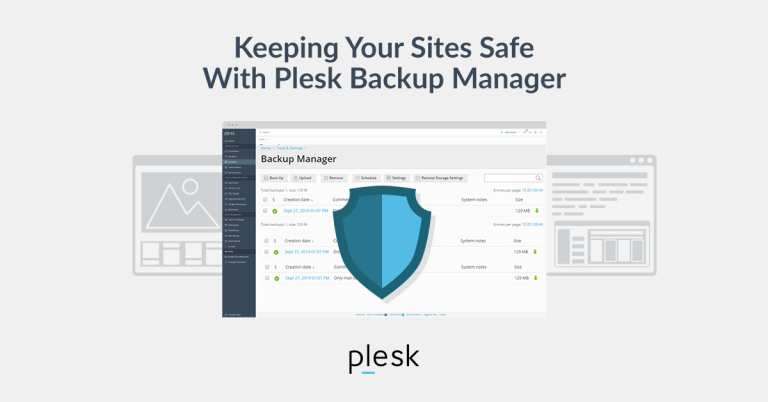Servers play a vital role in your IT infrastructure. And it’s paramount that you monitor their uptime and general performance to keep that infrastructure at its best. Unfortunately, disgruntled customers could decide to look elsewhere if your web server experiences downtime, runs slowly, is prone to outages, or is hindered by any other performance problems. Worst of all, critical business data (e.g. client records, financial information) can be corrupted if an internal file server creates errors.
Server monitoring enables you to watch over your systems and track numerous metrics that can make managing your IT operations easier. Generally, a server monitor runs accessibility tests to make sure that the server is reachable and live, and assesses response times to determine if its speed is good enough to satisfy users.
Server monitoring also flags errors such as corrupt files, security breaches, and various other issues. It’s predictive, too: server monitoring will show you if a disk is approaching capacity or you’re heading into other memory-related difficulties.
Often, server monitoring is used for real-time data processing, yet it can be a valuable way to delve into historical data. Checking information from the past enables analysts to identify if a server’s performance has gotten worse over a specific period. And they can also predict if (or when) crashes may occur.
The Challenges of Server Management
Server management is a continual process of operating servers to keep track of (and optimize) their reliability, uptime, and overall performance. It represents daily tasks involved in managing a server and maintaining its expected operations. There’s a tight focus on providing the constant availability necessary for a positive user experience, with minimal interruptions.
Managing servers involves a number of functions, though these vary depending on an organization’s IT setup and the amount of servers operated. Most companies incorporate daily monitoring, updating software, installing new tech, troubleshooting, and solving emerging issues into their server management. However, it also usually includes capacity planning and provisioning to make sure the organization has adequate system resources to facilitate its operations. Here’s an example: A business might require web servers capable of supporting up to 8,000 users at the same time, with a burst of as many as 10,000. A server manager would make sure this capacity was always available as required.
As a result, server management brings teams various challenges to overcome in a virtual environment, as IT managers are unable to physically examine server hardware to identify issues in person. However, physical servers have their drawbacks too.
In both environments, server management must encompass software and hardware — as long as an organization has the energy, bandwidth, cooling capabilities, and room to handle it all.
Virtual Servers Explained
A virtual server is a shared software environment designed to emulate a physical server’s functions. These became popular when administrators discovered that their organizations weren’t taking full advantage of their hardware servers’ capacity. If a company were to use just 20% of that capacity, for example, it could waste money on computing power it doesn’t actually need.
All physical servers need extensive administration, maintenance, security checks, and more — and all that costs money. As a result, it makes sense for companies looking to reduce their spends and maximize ROI to migrate their servers to a virtual environment instead.
Organizations typically source virtual servers from specialist providers. These operate infrastructures consisting of many physical servers, thousands upon thousands of them, based in data centers across the globe. Companies can rent and manage servers online exclusively via cutting-edge web based interfaces.
Furthermore, administrators can set up and manage their virtual servers with ease. This allows them to scale up to accommodate an unusual spike in activity and scale down later. Virtualization providers only charge for consumed power, which means using virtual servers can be substantially cheaper than relying on physical servers alone.
The Benefits of Server Management Systems
Server management systems are software tools designed to facilitate server administration. IT professionals can use these systems to manage a number of servers and gather operational data (e.g. memory, CPU usage, disk space, OS monitoring stats, security details). This can then be viewed in real time on a user-friendly dashboard. Server management systems can also accumulate historical data for monitoring metrics across specific periods.
It’s easy to confuse a server management system and a hypervisor (AKA a virtual machine monitor) in virtual environments. However, a hypervisor system generates and operates multiple virtual servers. It’s designed to keep these virtual machines performing in line with the operator’s requirements (not necessarily for performance-profile monitoring).
How Does Server Performance Monitoring Work?
Server monitoring, as a term, covers a server’s general health. But server performance monitoring focuses explicitly on performance metrics. With regards to physical servers, these metrics include utilization of CPU and memory, and network performance. For virtual servers, though, performance metrics typically encompass web server or database response times, bandwidth usage, and others related to the utilization of resources. This depends on the type of server used, though.
Why is server performance monitoring so important? One of the top reasons is its predictive nature: Performance problems (e.g. slowdowns) can help IT professionals identify issues as they develop. Bottlenecks are valuable for revealing service or component upgrades required. Capacity management tools enable teams to project the resources they may need for supporting new software or additional workloads.
Another major concern that affects server performance monitoring is compliance. Numerous organizations dedicate themselves to delivering a specific level of performance and uptime. That may be fundamental in financial trading, media streaming, and other high-stress working environments. And penalties for non-compliance can be extremely high if performance drops beneath specified thresholds.
How Does Open Source Monitoring Work?
With an open source monitoring setup, open source software is critical to the monitoring system. It typically incorporates Linux and other open source solutions, and monitors IT infrastructure and server infrastructure (for Linux or proprietary servers).
Open source software refers to applications that allow any user to access, adjust, and distribute its code. Open source tools may perform as well as commercial alternatives, though many people choose the latter as they’re usually easier to install and operate. Commercial server monitoring tools (primarily cloud-based ones) are typically turnkey options, so they’re often simpler and deliver a stronger user experience.
Popular Monitoring Systems
Three varieties of server monitoring systems are available:
- Traditional on-premises software-based systems
- SaaS/cloud-based systems
- Mobile systems
However, some hybrid systems incorporate a combination of traditional and cloud technologies for a custom configuration. Below, we’ll explore the advantages and disadvantages of each variety.
Traditional On-premises Software-based Systems
These systems rely on software installed on an organization’s on-site hardware, and it’s the most traditional model. It usually incurs a substantial fee (paid upfront) and a pricey maintenance plan that ensures you receive continual support from the provider. As each installation environment varies, this type of system can be complicated, prone to challenges, and time consuming.
Still, on-premises software also provides a wealth of customization and can offer control over data storage locations. That may be a major benefit if your company needs to report to regulatory bodies. Generally, on-premises software costs more than cloud-based alternatives.
SaaS/Cloud Systems
Cloud monitoring systems are installed and operated exclusively online. You don’t need to install any software on your infrastructure, and you can launch systems quickly (even within a few hours). Cloud services offer plenty of flexibility, though they provide less control over personalization.
This type is available via subscription plans, though many providers don’t need long-term contracts. That makes it easier to get started and less risky than traditional on-premises systems.
Mobile Systems
While this isn’t one of the biggest server monitoring system types, numerous cloud and on-premises providers offer optional mobile implementation. That means you can run these systems on a mobile device such as a smartphone or tablet. As a result, you’ll have access to server monitoring data at any time, in any place. Mobile functionality can be limited compared to what’s available on a computer. However, as the majority of cloud-based and on-premises systems provide optional mobile monitoring, it’s worth considering.
How to Get Started with Your Server Monitoring
Each environment is different. However, certain best practices will help your IT department get the maximum back for their buck when you invest in a server monitoring system.
Make Sure Hardware Operates In Line With Suitable Tolerance Levels
File servers are commonly pushed to the limits of their operational capabilities and rarely get a break. Often, they run 24 hours a day, 7 days a week, without downtime. That’s why it’s crucial to monitor such metrics as CPU utilization, RAM utilization, storage capacity usage, and CPU temperature to confirm that each server continually runs at its best. Perform these regularly to identify potential issues sooner rather than later.
Be Proactive In Checking For Failures
When using your server monitoring tools, look out for issues affecting your hardware and software. Tools can alert you to errors caused by a corrupted database, for example, or if a security incident has left important services disabled.
Keep Historical Data In Mind
It’s rare that server problems occur in a vacuum, so look into the historical context of issues that emerge. You can do that by exploring metrics across a specific period, typically between 30 to 90 days. For example, you may find that CPU temperature has increased within the past week, which may suggest a problem with a server fan.
Monitor Alerts
Monitor alerts in real time as they occur. After triage, they should be investigated and resolved by an analyst. That’s the most common method through which analysts determine what has gone wrong. Explore reliable ways to manage critical alerts and prioritize them effectively. When escalating an incident, ensure it goes to the right individual as soon as possible to help foster stronger collaboration between team members.
Plan Short-term Cloud Capacity With Server Monitoring Data
When using virtual servers, server monitoring systems can play a key role in helping you plan the right computing power for specific moments. For example, if services become slower or users experience other problems with performance, IT managers can assess the situation through the server monitor. As a result, they’ll be able to allocate extra resources to solve the problem or initiate downtime in periods of low demand.
Make The Most Of Capacity Planning
In the past five years, data center workloads have increased significantly — almost doubling. Servers have had to keep up with this ongoing change. Fortunately, your organization can prepare for server requirements in years to come by analyzing long-term server utilization trends.
Take Your Asset Management Further
With server monitoring, you can discover which systems are getting nearer to the end of their lives and whether any assets have disappeared from your network entirely (through theft or failure). You can let your server monitoring tool handle the heavy lifting for you instead of depending on spreadsheets for tracking physical hardware.
Finding the Right Server Monitoring Tool for Your Organization
Bear the following server monitoring capabilities in mind when exploring server monitoring tool options:
- Range of coverage: Will the tool offer support for your organization’s various server types (e.g. software and hardware)? And is it ready for other server types you could use in the future?
- Alert management: Can you easily configure alerts through the configuration of triggering thresholds, and how will you receive those alerts? Also, are mobile users catered to?
- Investigating the cause of problems: Will a tool empower you to identify the cause of a problem through AI algorithms or logic? Or will it simply inform you of an issue with no context?
- User-friendly design: Can you interact with the system through a user-friendly dashboard that allows you to perform monitoring and triage, and enable you to respond to issues fast?
- Support: What technical support is available in an emergency? How can you reach out to representatives when you need help?

Final Words
Server monitoring is a primary function of all IT operations. As servers are essentially the life blood of an organization, IT management should take all steps necessary to make sure that they fulfil their potential. An intelligent system built for monitoring and managing servers is essential for that.
However, high-quality tools don’t just notify you of issues after they occur: they’re proactive enough to let you know about possible problems before they escalate into disasters. As a result, they’ll give you a head start in finding and implementing a solution.






